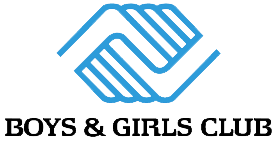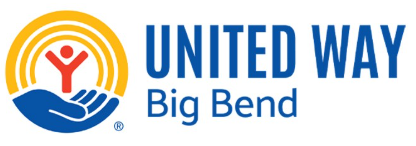Substance Abuse Education Resources
Opioid Awareness Toolkit
A Resource Guide and Action Plan for Boys & Girls Clubs.
Florida Department of Education
National Institute on Drug Abuse
Natural High - Lindsay Bettis - Miss Florida 2022
Adolescents Substance Abuse is America's #1 Public Health Problem.
America is facing an addiction epidemic and 9 out of 10 addictions begin in the teen years.
- Lindsay Bettis - Natural High
- Schedule a Natural High presentation for your Club Youth with Lindsay Bettis
Preventing prescription drug misuse during COVID-19
Important PSA from Joe Davis of the FL Alliance of Boys & Girls Clubs about preventing prescription drug misuse during COVID-19. Because so many of us are at home, it's even more important to safely store, use, and dispose of prescription medications around the house.
Boys & Girls Clubs of America
- Boys & Girls Clubs of America - OPIOID AND SUBSTANCE USE PREVENTION: A resource Guide and Action Plan
Dose of Reality
It is important to get your "Dose of Reality" about the risks and dangers of using prescription painkillers, as well as the signs of misuse, before it becomes a problem for you or your loved ones. The 21-member Statewide Task Force on Opioid Abuse, chaired by Attorney General Ashley Moody, was created by Executive Order 19-97 in 2019, in the wake of the Opioid Epidemic, knowing that a coordinated and comprehensive statewide drug control and substance abuse prevention strategy is imperative for education, prevention, treatment, recovery and law enforcement efforts.
- Dose of Reality
- Fast Facts on Fentanyl Toolkit - English and Spanish
Curriculum Resources for Educating Children about the Dangers of Substance Abuse
- Health and Opioid Prevention Education (HOPE)
- Heroin & Opioid Prevention and Awareness Toolkit - Maryland State Department of Education
- SAMHSA Opioid Overdose Prevention TOOLKIT
- SAMHSA Opioid Overdose Prevention TOOLKIT (Spanish)
- U.S Department of Health and Human Services – The Center for Faith-based and Neighborhood Partnership
- GenerationRx (elementary and teen)
- Smart Moves Smart Choices (elementary, middle/high school)
- Investigating the Heroin and Prescription Opioid Epidemic: A Lesson Plan
- Operation Prevention
- Too Good For Drugs Program (LEAD)
- Overcoming Obstacles
- PBS Learning Media – Florida Tragedy and Hope -
- Stop Addiction Before It Starts
National Institute for Drug Abuse (National Institutes of Health)
- For Teens - Explore blog posts, videos, and games
- For Teachers - Includes a lesson plan and activity finder
Based upon national data provided by the National Institute of Drug Addiction, (NIDA) and the most recent Center for Disease Control, (CDC) regarding prescription opioid abuse and heroin abuse, prevention education is vital to all students in primary and secondary schools.
Kindergarten Through Fifth Grade
Grades kindergarten through third, instruction should include “differences among foods, poisons, medicines and drugs; personal responsibility for ones actions;” and rules regarding who provides, distributes, accesses and monitors medication in the home and community and Grades fourth through fifth, instruction should include, safe and unsafe behavior when around peers and family that are using medication, “how to identify different drugs; the effects of drugs”; and why some drugs and medications are extremely dangerous if ingested or taken without a physician’s permission.
- http://www.fda.gov/downloads/Drugs/ResourcesForYou/Consumers/BuyingUsingMedicineSafely/UnderstandingOver-the-CounterMedicines/UCM094874.pdf
- K to Grade 2
- Grades 3 to 5
- Operation Prevention Elementary OTC and Prescription Medicine PPT Lesson
- Footprints for Life
- Too Good for Drugs Program (L.E.A.D.)
- Good Behavior Game
- I Can Problem Solve
- Al's Pals
- Online BrainPop Curriculum
- Second Step
- Keep a Clear Mind
- New Beginnings Addiction Prevention
- http://www.cdc.gov/medicationsafety/
- https://drugfree.org/article/medicine-abuse-project-partners/
Helpful Resources for Kindergarten through Fifth Grade
- Understaning Over-The-Counter Medicine
- Kids Health - Health Problem Series - Drugs
- Medication Safety Program
Sixth through Eighth Grade
Grade sixth to eighth grade, instruction should include the definitions of addiction, abuse and misuse; how family, peer, media and community influences substance abuse.
- Overcoming Obstacles – Middle School
- Project Alert Substance Abuse Prevention Curriculum
- Kids Health Peer Pressure Lesson Plan Grades
- https://drugfree.org/drugs/drug-heroin/
- OTC Medicine Safety
- http://www.cdc.gov/vitalsigns/heroin/index.html
- http://www.drugfree.org/why-do-teens-act-this-way/
- http://teens.drugabuse.gov/
- http://www.nlm.nih.gov/medlineplus/prescriptiondrugabuse.html#cat80
Helpful Resources for Sixth to Eighth Grade Relating to Addiction and Abuse
In the sixth to eighth grade, instruction should directly focus on painkillers, including opioids, a narcotic of choice for teens rather than emphasizing a more generalized anti-drug approach – focus on the science of addiction. Additionally, instruction on how recreational use of prescription pain relievers can lead to heroin use/abuse and addiction –with emphasis on the potential progression of addiction that could lead to heroin addiction and potentially death as well as an increased likelihood of infectious diseases such as Human Immune Virus/Acquired Immunodeficiency Syndrome, (HIV/AIDS), Hepatitis C and Methicillin-resistant Staphylococcus (MRSA.)
Helpful Resources for Sixth to Eighth Grade Relating to Heroin and Painkiller Addiction
- From Prescription to Heroin
- Today’s Heroin Epidemic
- Brain Development, Teen Behavior and Preventing Drug Use
- Teens: Drug Use and the Brain
- Prescription Drug Abuse
Ninth through Twelfth Grade
Grade nine to twelve, instruction should include a review of addiction, proper handling of medication and ingestion by prescription only. The link between a simple medical procedure – like getting wisdom teeth pulled or having a sports related injury – and the potential for addiction to occur if abused and not taken properly, (i.e. following doctor’s orders). Instruction should also include the importance of family medical history, including the disease of addiction and the how to discuss concerns with a trusted adult.
U.S. Department of Health & Human Services https://www.hhs.gov/opioids/
Tips for Teens:
- Underage Drinking – Myths vs. Facts
- Inhalants
- Cocaine
- Heroin
- Methamphetamine
- The Brain’s Response to Prescription Drugs
- Vaping
- Nicotine Addiction
- Drugs and the Teen Brain
- Brain and Addiction
- CDC Guideline for Prescribing Opioids for Chronic Pain
- Understanding the Epidemic - Opioid Overdose
- Rx for Understanding: Preventing Prescription Drug Abuse
- http://www.fda.gov/Drugs/ResourcesForYou/ucm193918.htm
- http://www.samhsa.gov/find-help/national-helpline
- http://www.drugabuse.gov/related-topics/treatment
In grade nine to twelve, health instruction should include how to recognize symptoms of a drug overdose, emphasizing the importance of quickly seeking medical attention for a person who has overdosed. Additionally, health instruction should also address how students can help a friend or family member who may be addicted to prescription pain medicines and/or heroin.
Helpful Resources for Ninth Through Twelfth Grade Relating to Recognizing Drug Overdose Symptoms
- Misuse of Prescription Pain Relievers: The Buzz Takes Your Breath Away . . . Permanently
- SAMHSA’s National Helpline
- Drug Abuse Treatment
In grade nine to twelve, health instruction should provide access information to the Florida Department of Mental Health and Addiction Services for the free program to encourage young people, parents, care-givers and teachers, clergy people and coaches to Start Talking about prescription drug abuse and other drug addictions.
Other Approaches to Engaging Youth
Bring in a speaker who can lead a presentation on an age-appropriate topic relating to substance abuse and/or positive youth development, such as:
- Law enforcement
- Emergency response personnel (firefighters, paramedics)
- Healthcare professional
- Social service/non-profit community leader
- Local elected official
- Other members of your community’s local anti-drug and/or anti-opioid taskforce
Activity ideas:
- Engaging youth in creative expression (such as an essay, poetry, song, skit, video and/or poster contest)
- Challenge youth to create a social media campaign
- Create a service-learning project dedicated to studying and taking action relating to substance abuse



